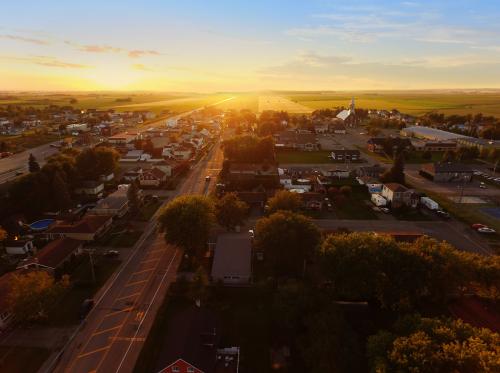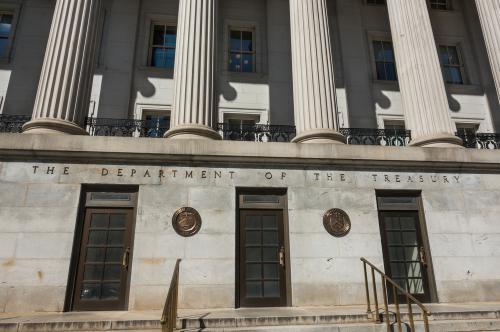This is the second in a two-part blog series on the evolution of rural policy in America reflected in recent federal legislative and executive actions. Part 1 on the promise of the American Rescue Plan is here.
While the American Rescue Plan, the $1.9 trillion relief and stimulus, was designed to help communities claw back from the worst ravages of the pandemic, the Biden administration’s proposed American Jobs Plan (AJP) is the opening salvo in an envisioned economic transformation. Forming the basis of its negotiations with Congress on infrastructure, the AJP seeks to put communities on a path to long-term prosperity that distributes opportunity and economic mobility more fairly while mitigating climate change.
With an orientation on “place” (its companion, the American Families Plan, focuses primarily on people), the AJP’s proposals provide ample opportunity to target specific kinds of communities. The word “rural” gets 29 mentions, reflecting an earnestness to follow through on the president’s pledge to “build a new rural American economy for our families and the next generation.”
As we showed in a recent analysis, what currently passes for rural policy at the federal level is really a vast collection of programs that is fragmented, incoherent, and often unfriendly to rural realities. The wide range of investments in the AJP that could benefit rural America—from $100 billion in support for broadband and $10 billion for a new community revitalization fund to $5 billion to clean up brownfields and $10 billion to transition rural electric cooperatives to clean energy—raises questions of how the administration will avoid adding to the confusion and ensure that rural communities can package and maximize the use of these resources to meet their long-term needs.
The Rural Partnership Program: Redefining the Social Compact with Rural America
One answer lies with the proposed new Rural Partnership Program (RPP). The president’s budget codifies this proposal with a $5 billion FY2022 request, with outlays over five years, placing the RPP within the Rural Development division of the U.S. Department of Agriculture (USDA-RD).
This would represent both a significant modernization and financial boost to USDA-RD’s capabilities for facilitating equitable community and social development: For comparison, the FY2021 program level for USDA-RD’s Rural Business-Cooperative Service (the office focused on economic development) is a little over $1.5 billion based on $319 million of budget authority.
Envisioned to “help rural regions, including Tribal Nations, build on their unique assets and realize their vision for inclusive community and economic development,” the RPP seeks to match the diversity of rural places across the U.S. and invest in local leaders, organizations, and strategies, giving communities a fighting chance to build resilience and prosperity on their own terms. The flexibility, size, and time horizon of its resources would fill a gaping void in the federal architecture.
Yet the devil, as they say, is in the details. A successful RPP will hinge on its ability to stay true to some key principles:
1. Put capacity-building at the core
While politicians spar about different uses of the word “infrastructure,” it is clear to local leaders in rural places that one of the key challenges they face, even in the face of 400+ federal programs, is a severe lack of investment in the “software” that makes a community run—staff capacity and training; technical expertise; strong and healthy nonprofits, community associations, and public administration; and connected networks and trusted relationships among different constituencies who are communicating and collaborating.
If the RPP is to recognize local leadership and strategies as the starting point for successful, equitable rural prosperity, strengthening this type of community and civic infrastructure must be central to its mission. That will require putting scaffolding in place at the national, regional, and local levels.
The U.S. Department of Housing & Urban Development’s (HUD) Section 4 program on capacity building for community development offers one model that might be adapted to enable a set of national intermediaries focused on rural. Regional rural development hubs are well-positioned to help communities, towns, counties, or states collaborate across geographies and leverage regional differences to their comparative advantage. And local, grassroots efforts require flexible and direct investments to increase and upgrade their human and organizational capital.
2. Modernize the metrics of success
RPP is an opportunity to rethink how successful, equitable rural development is measured. The standard focus of federal economic development programs on jobs created and retained, infrastructure projects completed, or funds and financing invested does not provide a full picture of rural well-being nor creates healthy incentives. Changing this will require investing in high-quality rural data, especially in communities of color, and adopting a holistic, outcomes-based approach. Evaluation policies and metrics from international development programs (USAID, Millennium Challenge Corporation (MCC), USDA Foreign Agricultural Service) and asset-based development approaches (such as Wealth Works) will provide useful models. RPP could be a catalyst to modernize USDA-RD’s technical expertise and staff capacity.
3. Aim for long-term, lasting community impact
RPP should be positioned as an “on ramp” for communities to achieve long-term improvements in their economic resilience and well-being, offering flexible and substantial grants with long-term time horizons. The MCC five-year “compact” provides a model, as compacts are locally developed yet rigorously define a small set of clear, mutually agreed priorities that promise the highest return on investment. Some of the communities that could use the investment most—especially in persistently poor counties—may be the least equipped. This means that RPP will have to consider how to balance and serve communities across a spectrum of “readiness.” Given the administration’s priorities, it is likely that RPP would prioritize those communities and entities that are able to deliver on an integrated approach, ensuring that cross-cutting issues such as climate mitigation and racial equity are woven into projects to improve facilities and infrastructure, expand business activity or start-ups, improve delivery of services, or invest in human capital.
While it is a tiny portion of the overall investment portfolio suggested in the American Jobs Plan, the RPP displays important recognition that federal policy must shift to unlock the full potential of rural America. It signifies a change in approach, and represents a first step toward redefining the federal government’s role and strategic orientation in responding to the pressures and headwinds facing many rural communities. It will be important to ensure that this first step does not become the last one.
The Brookings Institution is committed to quality, independence, and impact.
We are supported by a diverse array of funders. In line with our values and policies, each Brookings publication represents the sole views of its author(s).








Commentary
Will Biden deliver for rural America? The potential of the proposed Rural Partnership Program
June 24, 2021